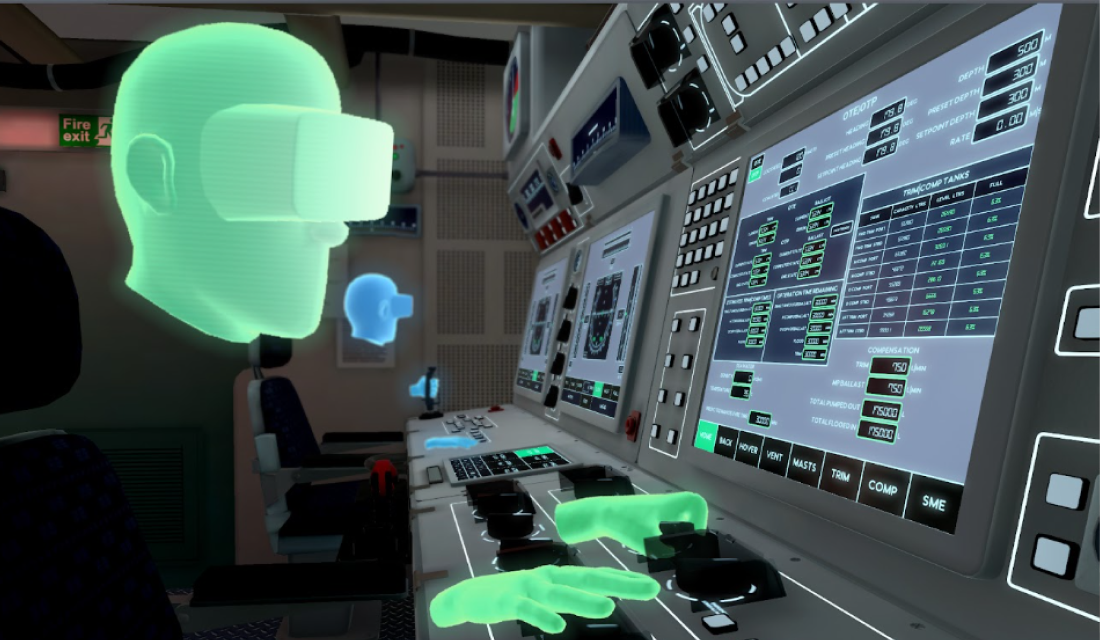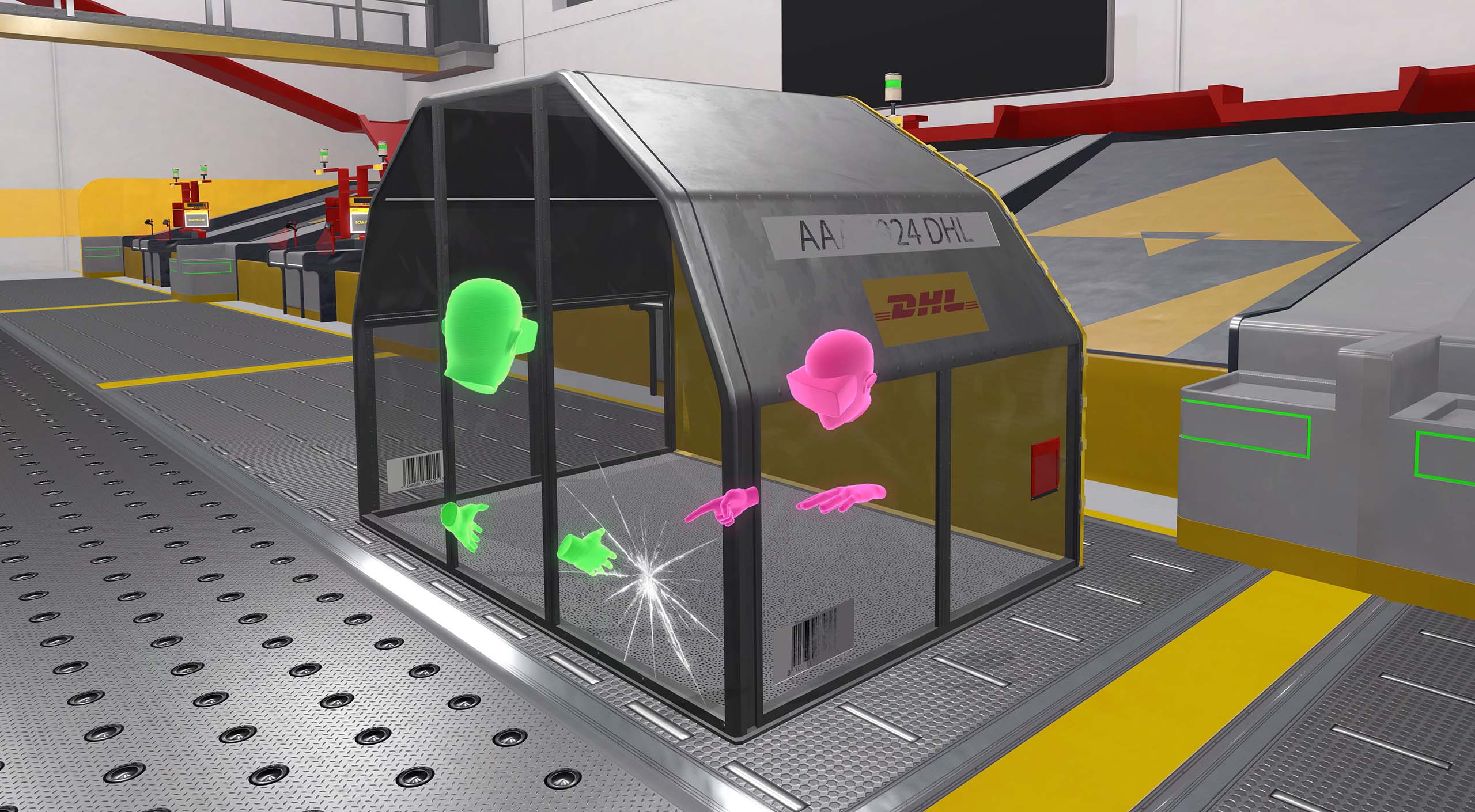


In this customer story
Reducing training complexity and risk with a virtual equipment replica
Collaborative training with an instructor
Personalized training
Reducing operational costs
As part of their new strategy, the Royal Navy and their defence technology partner QinetiQ wanted to move more sea training to shore. Submariner training presented a particular challenge, as it currently takes place onboard real submarines or in physical simulators, requiring travel to a specific site and only allowing a small number of trainees at a time. This makes the training process time-consuming and expensive. It was clear they needed a technology-based solution to cover a very broad range of role-specific skills training. The technology also had to facilitate team training for those who had reached a certain level of competence, enabling them to practise working together effectively and safely.
Trainees practiced in a virtual submarine control room, joined by an instructor.
We developed a unique multi-user VR environment simulating a real submarine control room, complete with working displays, operators and multiple interaction points. Helping trainees learn and practise skills in a realistic environment, with the instructor appearing as an additional head and pair of hands to point or guide them. All participants are also linked by voice as well as visually, enhancing the interactive realism and learning potential.
Performance data is tracked via the Immerse Platform, and used to adapt the training to personalize it, making it slower or faster according to individual needs and previous level of expertise, having a major impact on training effectiveness and employee satisfaction.

Results
- Decreased operational costs by minimizing the time spent in real submarines or in physical simulators, as well as travel costs
- Enhanced safety and risk management through virtual rehearsal of dangerous scenarios, ensuring crew readiness without physical risks.
- Improved team performance and efficiency by promoting effective collaboration in simulated environments.
- Increased training program scalability and flexibility, accommodating diverse skill levels and learning paces of submariners.
- Enabled data-driven decision-making for training programs, providing trainers with comprehensive analytics and progress insights from each session



